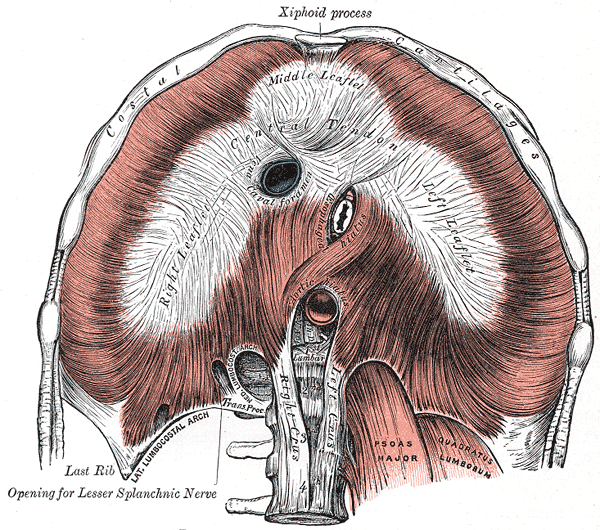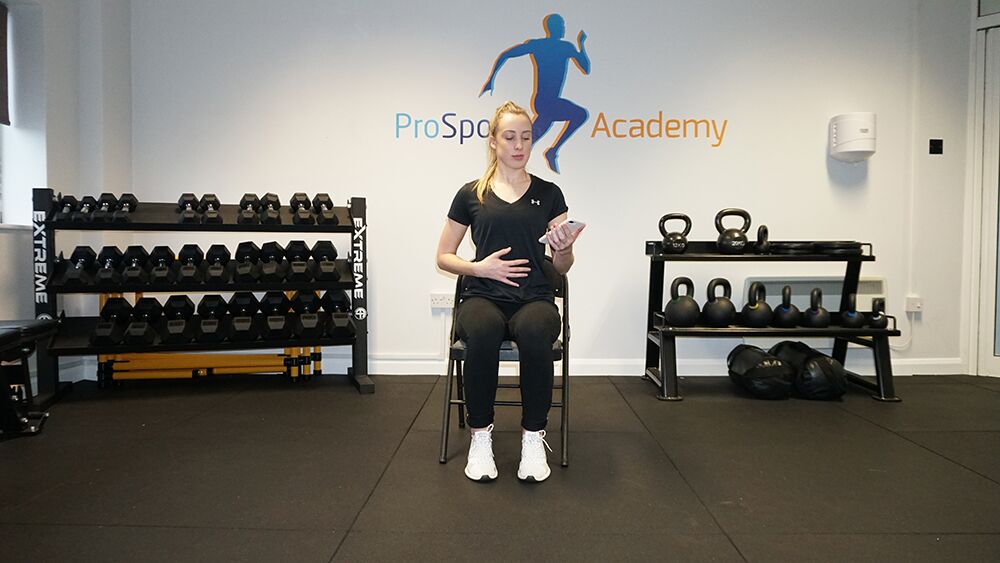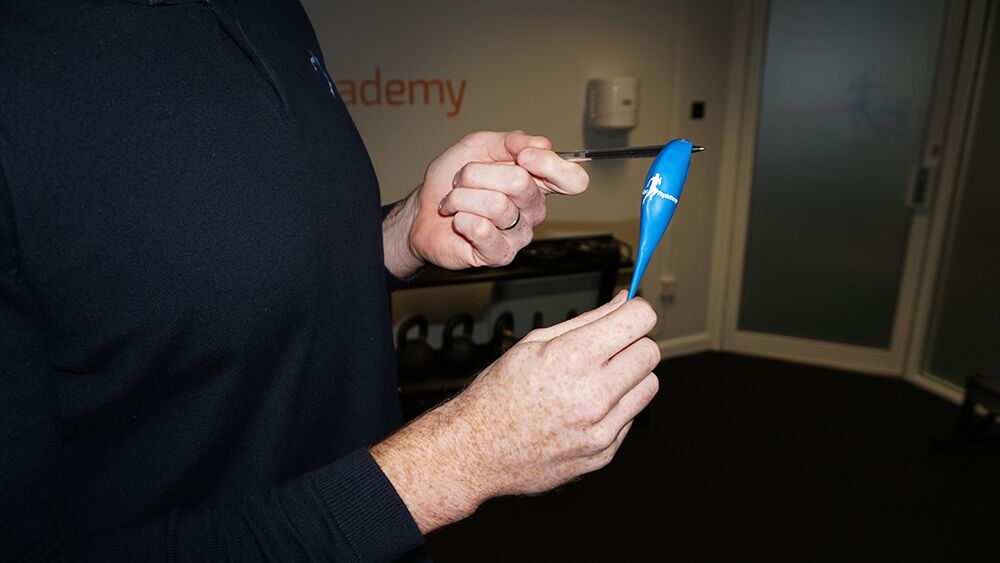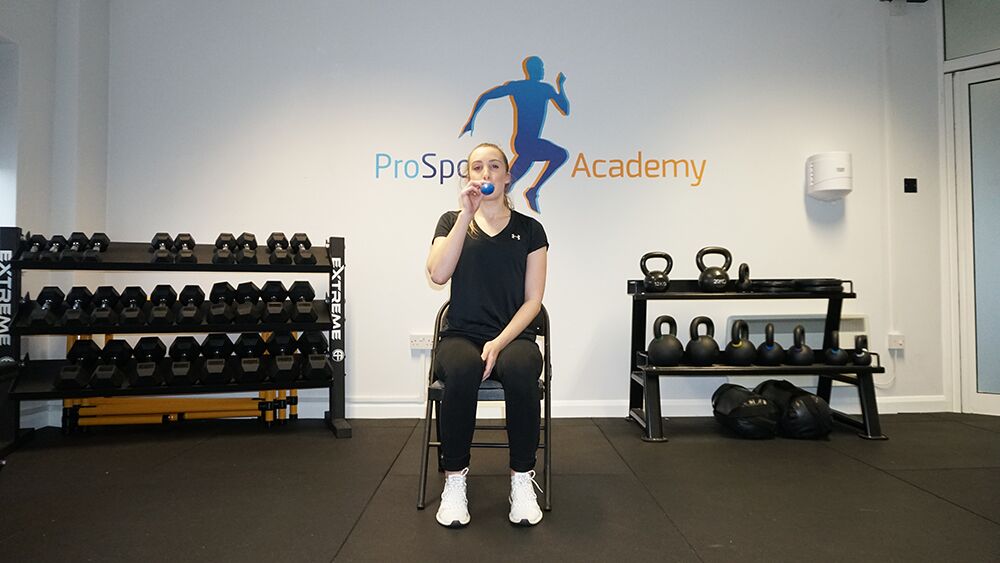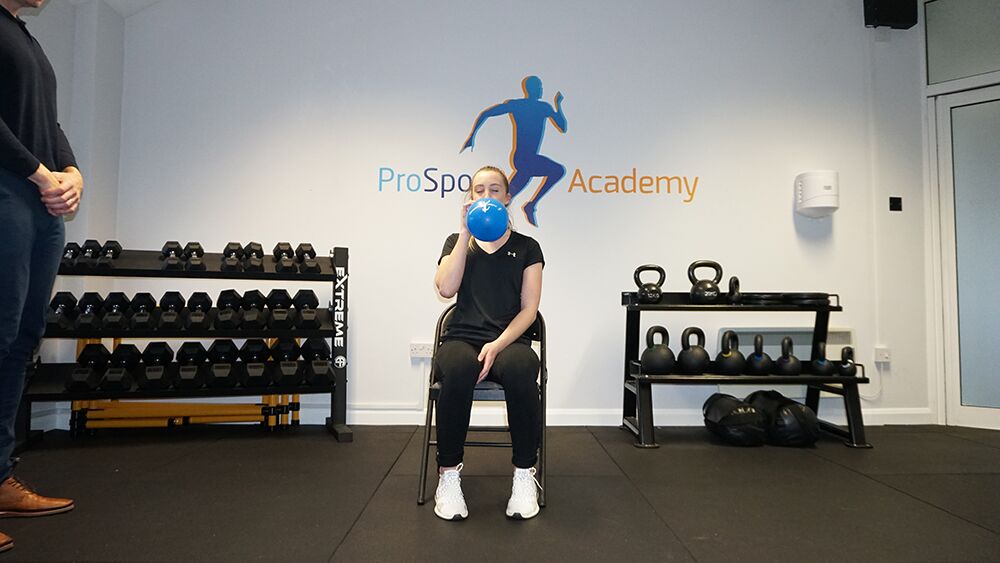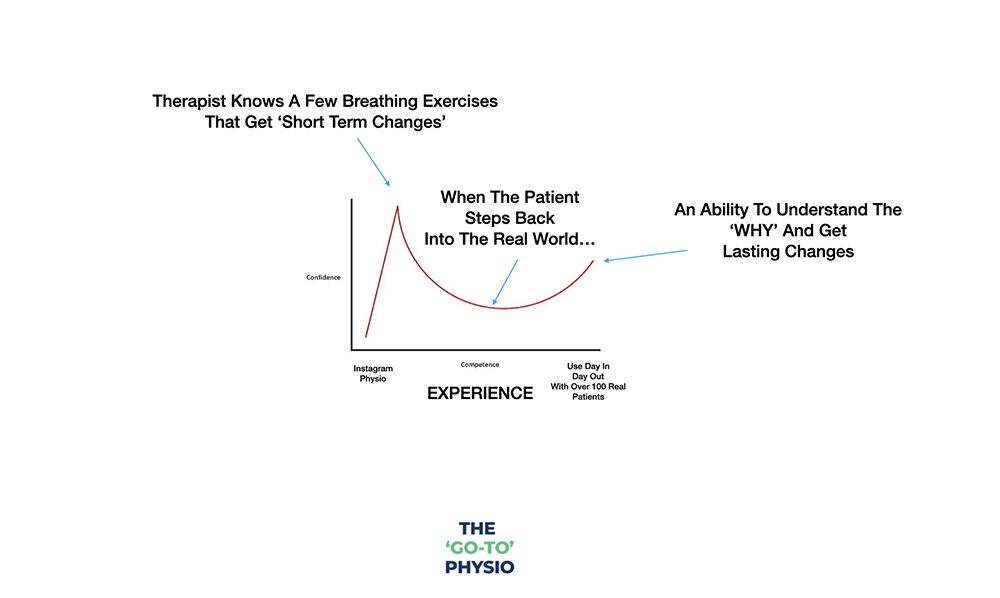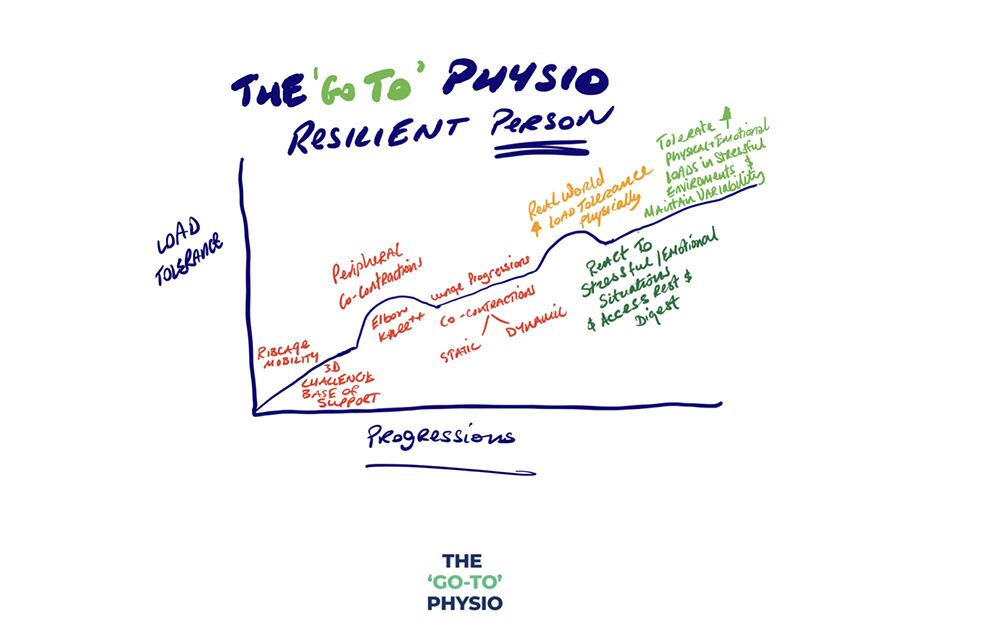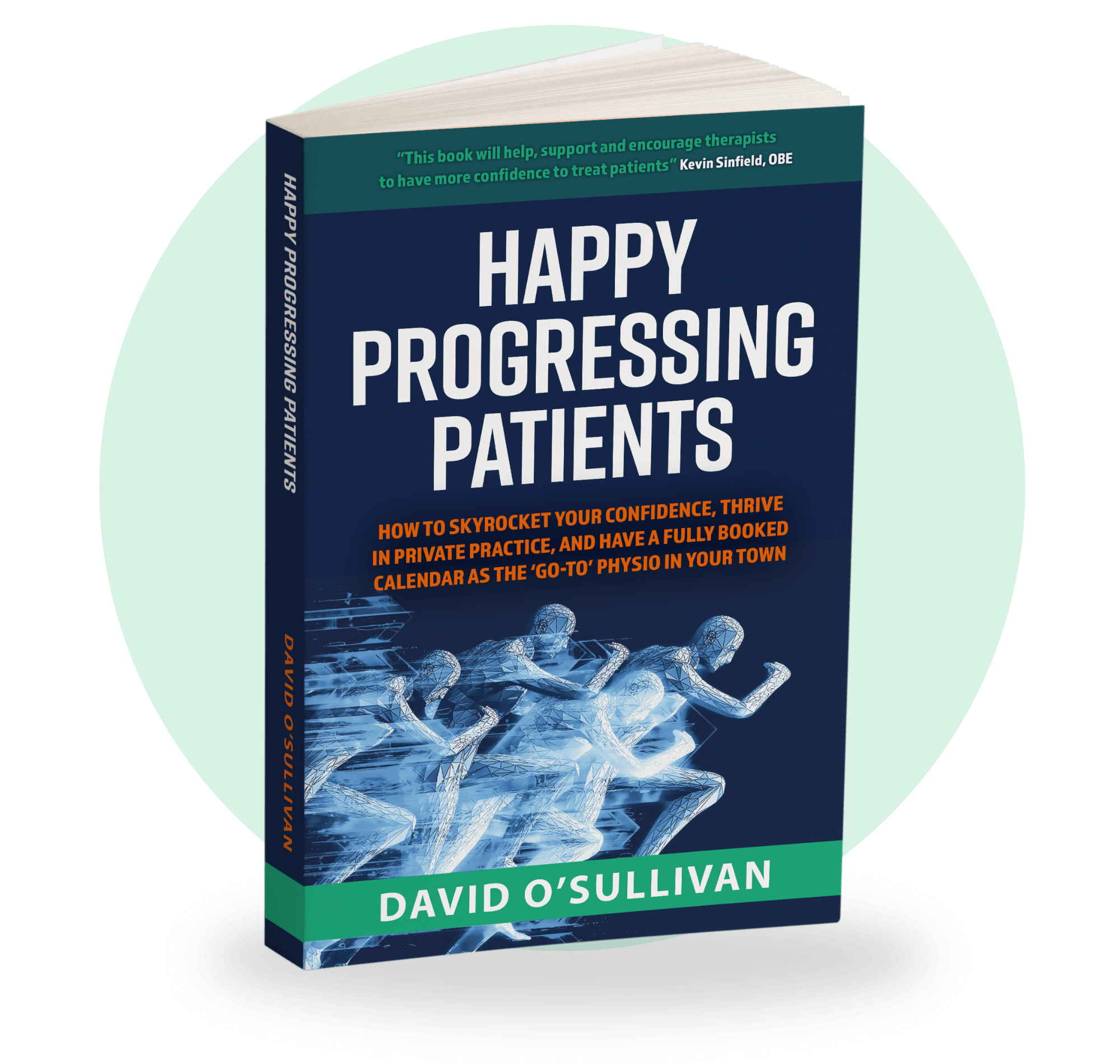
In this post, you’ll learn just how simple it can be to influence your patient’s diaphragm and pelvic floor.
Asking someone to take three sets of ten deep breaths…
….without knowing what you’re really doing and why you’re actually doing it is something I’ve been guilty of in the past when first integrating breathwork into my treatment approach.
As always, it’s critical that you can clinically reason and understand the ‘WHY’ behind everything your doing.
If you’d like to see a video representation of the Assessment And Treatment Of The Diaphragm Made Simple, you can find it in the bonus section of the Confident Clinician Membership. Inside the Confident Clinician, you’ll also discover additional content that complements the core training, helping you fill knowledge gaps, and put key skills into practice.
Click here to claim a 7-day free trial of the Confident Clinician.
Simple Yet Unknown Diaphragm Release Techniques To Increase The Length Of Your Diaphragm And Time Under Tension Of Your Pelvic Floor Muscles
Previously, I’ve covered the importance of the diaphragm and pelvic floor for the ribcage, pelvis and many muscles that attach to these structures.
In this article, I’ll show you how to quickly and easily influence these issues.
You’ll improve diaphragm mobility and take a step towards the long-lasting results you deserve, and your patients need.
The Term ‘Diaphragm Release Technique’
Now, before we start you should know… I’ve never been a big fan of the term ‘diaphragm release’….
A ‘diaphragm release’ in my eyes is simply restoring the ability of the diaphragm to go through a full range of motion yet this seems to be common terminology used by therapists.
Now over the years, I’ve spent a lot of money on courses teaching a certain diaphragm release technique, manual diaphragm release techniques, or some respiratory magic bullet that promises to ‘change your life’…
It never seemed to add up… sure, they’d get some immediate changes but never seeing the long-lasting results and positive effects I needed…
But that’s because I was never asking why…
Why can’t the diaphragm lengthen effectively in the first place?
Why is the respiratory system behaving like this specific to the patient’s story?
Why attempt to influence or work indirectly on the diaphragm muscle at all? And why is the pain still coming back?
If you’re not asking these questions… If you’re not bringing a patient’s full story into view and using that information…
Then you’re not going to get the long-term results you need from my experience… and there’s no point starting any type of treatment or manual contact…
It’s as simple as that…
You can use any release technique or manual therapy you like… but those short-term results will undo themselves…
…and so will your patients’ pain experience usually unless you can take them through a graded exposure program specific to their needs.
Before You Read Ahead…
Before you go ahead…. Make sure you read my last blog post here…
And understand just why we are looking at the diaphragm and pelvic floor in the first place…
Done?
Now you have that information, here are four simple diaphragm release techniques to restore the ability of the diaphragm to lengthen through a full range of motion….
The Diaphragm as a Respiratory Muscle
The diaphragm is primarily a respiratory muscle and exerts control over the lungs whilst we breathe…
This means that the diaphragm and pelvic floor’s ability to lengthen can be heavily influenced by controlled breathing.
Each of these exercises uses a patient’s ventilation to help the diaphragm to lengthen… Progressing in stages until the full effects can be felt.
Exercise One: Deep Breathing
Be sure to consider the effects this exercise has on your core as a group of muscles… And how you can use that information.
Firstly, take a slow breath in through your nose… and exhale as long as possible through your mouth… while noticing the conscious sensations of your abdominal muscles contracting.
Notice the intensity of those sensations.
Notice the length of your exhalation… During this time, your diaphragm is lenghtening.
Now the next part, you have to trust me, I’m being deadly serious!
Take another slow breath in through your nose… and this time instead of exhaling I want you to ‘hum’, YES ‘HUM’ for as long as possible.
As you continue you may notice the effect of the hum… your abdominal muscles engaging more than a normal exhalation… and that your exhalation is actually a lot longer than your previous breath out.
Can you see how when we prolong the exhalation and lengthen the diaphragm for longer, the abdominal muscles are working differently?
Did you also notice how much this simple diaphragm release technique improves the movement of the rib cage and pelvis just by humming?
If you really forced the hum, you may also notice your pelvic floor muscles contracting. I notice this sometimes and a lot of my female back pain patients comment on this.
Are you beginning to put these pieces of information together?
Using this kind of technique, we can work smarter, not harder…
With minimal effort and the simplest of treatment, we can improve diaphragmatic lengthening and encourage core muscles to work together, just as they are designed to.
Exercise Two: Exhalation Time Trial With A Focus On The Inhalation
This release technique improves diaphragmatic mobility again but on the inhale we are going to lengthen the pelvic floor by focusing on really slowing down the inhalation.
So…
Sit on a chair in a reasonably comfortable position and get your stopwatch ready to go.
Record your exhalation time using the instructions above with a phone or stopwatch.
Inhale slowly through your nose, focusing on the air as it passes through the nostrils. If you need to, close your eyes to help focus on the air.
Instead of exhaling through your mouth keep your tongue on the roof of your mouth with your lips closed and make a prolonged humming sound, starting the stopwatch once you begin humming.
It’s OK to smile while humming as it’s perfectly normal to feel a bit silly doing this!
Now as you come to the natural end of the hum I want you to notice the time on the stopwatch but don’t stop yet.
I want you to continue to hum and force every last little bit of air out of your body (your voice may even go a little bit croaky)…
And finally, when all the air is well and truly out of your body, stop the stopwatch and record the time. Take a moment to recover.
After this prolonged exhalation for the first time, it is natural for your breathing rate to increase slightly so as you inhale on the next breath…
I want you to just focus on the air passing through the nostrils and slow the air as it comes in through the nose with the phrase ‘I am safe’ running through your mind. This will help slow your breathing rate down further.
Now, go ahead and record your time again.
When you slow your inhale, your also increasing time under tension of the diaphragm muscle while stretching the pelvic floor muscles.
Overriding Your Conscious and Subconscious Mind
With the help of a hum, it is not uncommon for patients to feel the effects immediately, trebling, sometimes, quadrupling their exhalation time throughout the trial.
This is because we are overriding your conscious mind and helping your diaphragm lengthen naturally by giving you the task of humming.
Then when you get those feelings from your subconscious mind and body telling you that you are nearly at the end of the exhalation…
You use your conscious mind to override your subconscious and force out that last bit of air.
I hope you can see now that they are always playing off each other.
The reality is we can actually lengthen our diaphragm a lot more than we consciously think. This is why we need to be very particular with the types of stimulus we give our body rather than just basic breathing exercises, ‘sucking our belly button in’ or ‘switch your glute muscles on’ type exercises.
You can use this particular manual diaphragm release technique along with humming, any time you want to help you get into ‘rest and digest’ and prolong your exhalation.
Remember, inhalation is ‘fight or flight’ and exhalation is ‘rest and digest’. We want to spend more time exhaling than inhaling.
You can also try this exercise and hum silently if you are in a public place. The intention of humming silently is enough to get a similar effect.
I tell a lot of my patients, any time they are stopped at a red light to use the opportunity to practice humming… and move further into ‘rest and digest’ whilst lengthening the diaphragm.
Another great by-product of prolonged humming, which you may have felt towards the end of the hum, is that your chest wall and core muscles tighten and work hard…
This is because the true function of these abdominal muscles is to help you breathe and keep you alive.
Again we can subconsciously stimulate these muscles without needing to brace or attempt to activate them in isolation.
A third use for these exercises is to reinforce ribcage mobility between sessions for a patient with low back pain for example who moves in a very rigid and protective manner.
Balloon Exercises
For the next non-manual diaphragm release technique, you will require two balloons. Full credit to the Postural Restoration Institute for originating the use of this technique to help the diaphragm.
For more information, this article on the value of blowing up a balloon is worth a read. While I don’t follow the PRI methodologies nor agree with everything about their approach, they have certainly influenced my thought process.
Now… it may seem strange to be using a balloon in a clinical setting but, for improving ribcage mobility and diaphragm range of movement, they really can help…
Balloons come in various strengths depending on their quality but the stiffer, higher quality balloons with more resistance are the ones to look out for.
Usually, these will be the 10-pack of balloons sold at the same price as the 25-pack…
There is nothing wrong with the 25-pack balloons but just be aware as you progress you will want the stiffer balloons to challenge you further so you can continue to progress…
Exercise Three: Balloon with Hole Exhalations
For the first time, we will be undertaking a task whilst performing a diaphragm release technique…
We will also add resistance, in the form of a balloon. This will strengthen our abdominals, helping them to mobilise our rib cage and chest wall…
…just the way we need the ribcage and diaphragm to mobilise when we perform manual tasks like bending over to pick up an object or putting our socks on.
Before starting the trial, grab a pin, scissors, or even use your fingernail and just prick a small hole in the balloon, at the furthest point away from the mouthpiece.
It just needs to be a small nick so the balloon won’t inflate completely but will inflate a small amount.
Too big a hole and the exercise won’t be as effective.
Prick a small hole at the end of the balloon either with a pen or something sharp.
Once ready, you will lie on your back with your knees bent (if you are able to, or else sitting comfortably on a chair).
Holding the balloon with your left hand, put it in your mouth, and repeat the inhalation through the nose with the tongue on the roof of the mouth, lips together, and teeth slightly apart.
Now blow into the balloon and continue to blow at a pace just fast enough to keep the balloon inflating the small amount as shown in the image below.
Exhale into the balloon and keep it inflating as if there was no hole in it. Maintain your exhalation for as long as possible keeping the balloon inflated to its maximum potential with the hole in it. This helps train the abdominal muscles subconsciously while lengthening the diaphragm and mobilising the ribcage.
Once you’ve finished exhaling, keep the balloon in your mouth and pause for three seconds before lightly inhaling through the nose. Focus your attention on the air as it passes through the nostrils and slowing the air down as it passes through.
At the top of the inhalation… pause for a second and then repeat the exhalation through the balloon.
Override the subconscious mind at the bottom of the exhalation and make sure all air is out of your lungs before pausing for three seconds at the bottom.
Slow the air down through the nostrils as you inhale again.
Repeat this exercise for a total of six full breaths before taking a short break of two to three minutes and repeating again twice for a total of three sets.
What’s the outcome?
You should notice that this technique improves diaphragmatic mobility, exhalations should be getting longer, and you’re feeling a lot more relaxed.
Your diaphragm should stretch, you may even notice your rib cage and chest wall are moving more freely as you exhale and that your abdominals are working harder.
Remember, it’s the INTENTION of blowing the balloon is vital here, to get your abdominals, diaphragm, pelvic floor and other muscles coordinating together as one rather than trying to isolate the diaphragm or pelvic floor.
Exercise Four: Balloon Exhalations
This time you will be performing a diaphragm release technique without a hole in the balloon…
It does mean it will be tougher but you’ll continue to see even more improvement in the ability of your diaphragm to release, stretch and lengthen…
In all honesty, I am using this option below less and less these days. If I have someone who is really stiff through the ribcage, I may choose this option but I actually prefer the three previous options.
Anyways, let us take a look anyway…
To begin with, lie on your back with your knees bent (if you are able to or else sitting comfortably on a chair).
Holding the balloon with hand, put it in your mouth, and repeat the inhalation through the nose with the tongue on the roof of the mouth, lips together, and teeth slightly apart.
Now blow into the balloon and continue to blow at a pace just fast enough to keep the balloon inflating until your exhalation comes to a natural end.
We want a slow, steady exhalation and the balloon inflating at a steady pace. The first breath might be tougher as you overcome the initial resistance of the balloon.
Now exhale into a balloon without any hole. Maintain a slow steady exhalation throughout, pausing at the bottom of the exhalation for three seconds before slowly inhaling again through your nose. This exercise provides even more resistance for the abdominals to work against whilst mobilising the diaphragm and ribcage.
Once you’ve finished exhaling, keep the balloon in your mouth and pause for three seconds before lightly inhaling through the nose…
…focus your attention on the air as it passes through the nostrils and slowing the air down as it passes through.
At the top of the inhalation, pause for a second and then repeat the exhalation through the balloon.
Override the subconscious mind at the bottom of the exhalation and make sure all air is out of your lungs before pausing for three seconds at the bottom and slowing the air down through the nostrils through the inhalation again.
Repeat this process until the balloon is fully inflated, ideally within two to three breaths…
Now, this time, deflate the balloon to the side of your mouth (don’t swallow the air) as you inhale through your nose with your lips closed, tongue on the roof of the mouth, and your teeth slightly apart.
That is one repetition or one full balloon inflation. Repeat this process for a total of six full balloon inflations before taking a short break of two to three minutes and repeating again twice more for a total of three sets.
You should notice that your exhalations are getting longer; you may even notice your rib cage is continuing to move more freely as you exhale and that your abdominal muscles are working really hard at the end of the exhalations.
Why Use a Non-Manual Diaphragm Release Technique?
Do you see what is happening throughout these exercises? What is the primary outcome?
Each ‘diaphragmatic release’ technique improves diaphragmatic movement, we stretch muscle fibres, restore diaphragm mobility and allow it to lengthen… but it all has a much broader effect….
With the diaphragm fully lengthening your patient will be increasing the chest wall mobility, allowing the rib cage to depress, internally rotate and retract throughout the ventilation process while helping the patient get back into ‘rest and digest’.
Equally as important, each diaphragm ‘release’ technique may improve the coordination of the transverse abdominis, glute max, and obliques working together as one unit in the real world…
So it isn’t just the diaphragm and pelvic floor we are considering… but the effects they have on the body as a whole and the person in front of you.
Chronic Obstructive Pulmonary Disease
More often than not you will be using a diaphragm release technique as a treatment in private practice for troubling shoulder pain, hip pain, or any other issue influenced by the ribcage and pelvis.
However, there are some other conditions on which an intervention like these can have positive effects for national healthcare therapists…
Chronic obstructive pulmonary disease (COPD) is the name for a group of lung conditions that cause breathing difficulties, placing the diaphragm at a mechanical disadvantage. These include:
Emphysema – Damage to the bronchioles and alveoli.
Chronic bronchitis – Long-term inflammation of the airways.
Data suggests that physical therapy and improving diaphragm mobility in clinically stable patients with chronic obstructive pulmonary disease (COPD) can improve quality of life…
Of course… chronic obstructive pulmonary disease (COPD) is, as a whole a respiratory issue and so strengthening the muscle around the lungs and improving chest wall mobility may make it easier for patients to breathe…
But it’s important to remember that any diaphragm release technique and manual therapy can be used to positively impact a number of different issues…
A Word Of Warning And Concluding Thoughts
Yes, each release technique improves diaphragmatic mobility…
The effects of a manual diaphragm release technique may help core muscles… implemented properly they can play a key role in your intervention and treatment plan… HOWEVER…
These are no magic bullets…
…please don’t get sucked into seeing these diaphragm studies and myofascial diaphragm release type movements above… and just use these short-term quick fixes…
Or even fall in love with ‘humming’ and forgetting all the good things you are already doing.
This is coming from personal experience…
Don’t get sucked into seeing some short-term changes… and improvements in hip flexion and shoulder internal rotation… and thinking this is the be-all and end-all.
Anyone can create short-term changes… it is the ability to maintain these changes… when your patient stands up, leaves your clinic, and goes back into the real world. That is the art of our profession.
Your patient needs the ability to tolerate the loads placed upon their body and mind… in the real world that counts most.
That is why it is CRITICAL that you acquire the full skill set… to really have meaningful impacts on your patient’s lives.
The ‘humming’ might be a useful tool at the appropriate time of the graded exposure program but it’s just one piece of the puzzle at the right time.
For me, I use it initially to improve ribcage mobility if required, then it’s straight up the graded exposure ladder…
For more information on my ‘Go To’ Therapist Mentorship step-by-step treatment plan click here.
Do You Want More Help Getting Consistent Results With Every Single Patient?
If you want more help progressing with every patient, bridging the gap between lower and higher-level rehab, or achieving consistent results… Click the link below, book a FREE 30-minute adherence and rehab progressions strategy call and begin your journey to becoming the go-to therapist today.
Get Your FREE Copy Of The Amazon #1 Bestseller That Holds The Secret To Confidently Treating Any Patient!
Download a Free ‘ebook’ copy of the 8-Step ‘World Cup’ Treatment Plan that helped my private patients achieve full recovery and made me a ‘go-to’ physio for complex cases…
